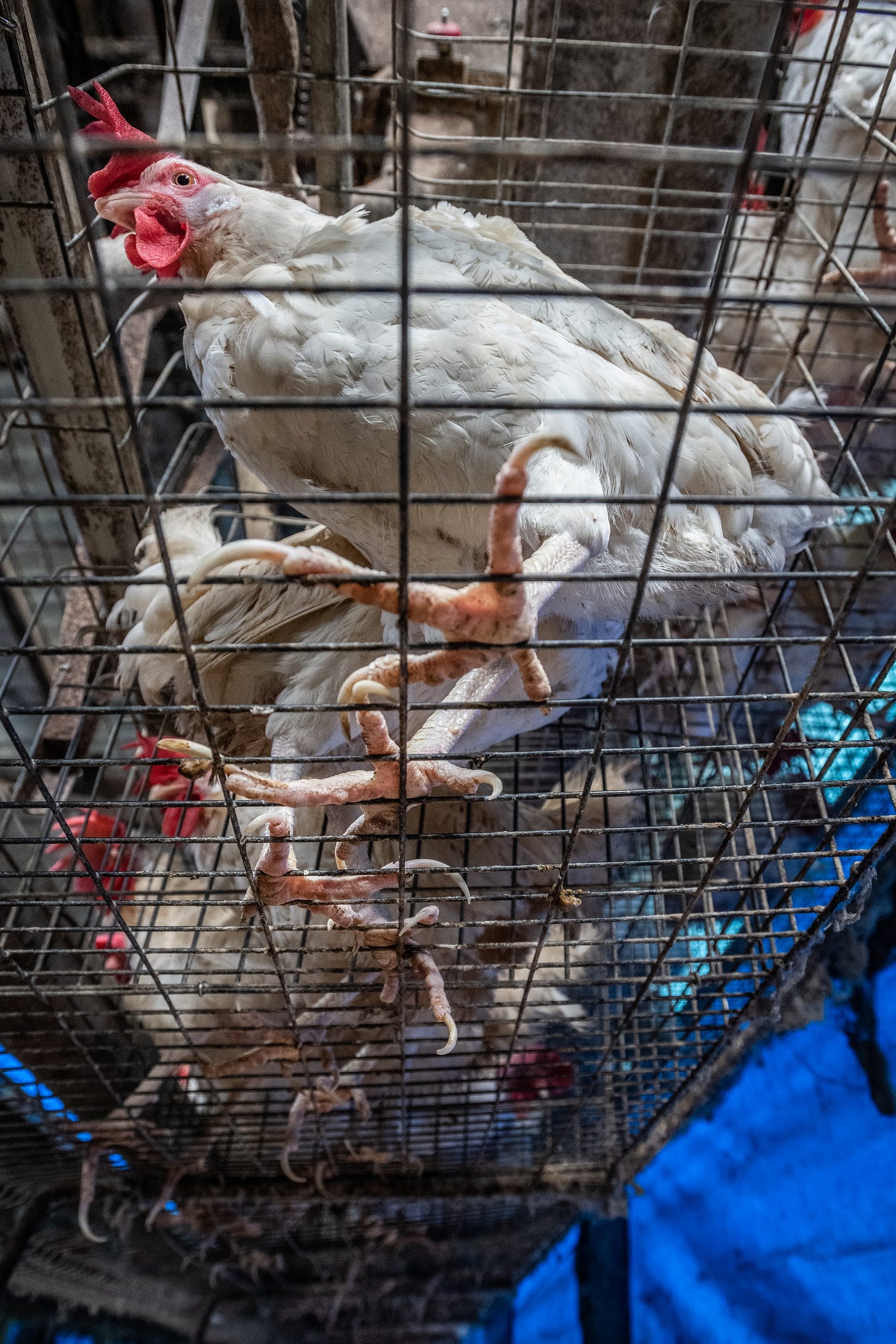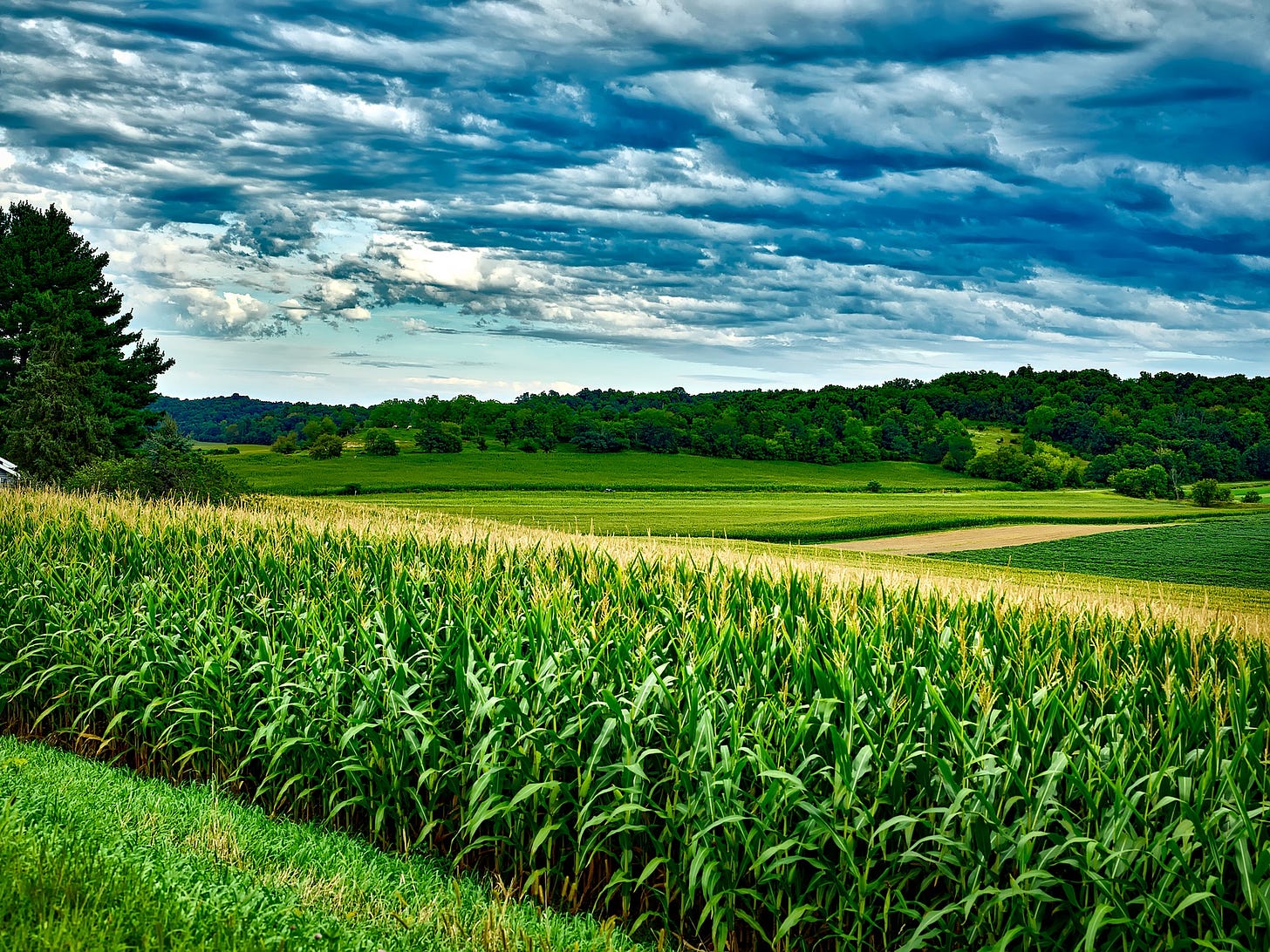One Solution for a Broken Food System (part 2)
How does large-scale animal and crop farming affect human and planetary health? 🐮🌾
In part 1, we examined how the Biblical command to love God and love our neighbors relates to creating a more sustainable food system. In part 2, we're diving into the first of many key areas where the food system needs improvement: factory farming.
Sign up below to get all the posts delivered to your inbox. 👇🏻👇🏻
Large-Scale Farming: Mistreating Animals and Depleting the Soil
Concentrated animal feeding operations serve as one of the most glaring examples of how broken our food system has become. Commonly called CAFOs or factory farms, we rely on these massive industrial facilities to raise:
70.4% of cows
98.3% of pigs
99.8% of turkeys
98.2% of egg-laying hens
99.9% of meat chickens
Photo by Jo-Anne McArthur on Unsplash
Farms qualifying as CAFOs house "more than 1,000 animal units" in confinement for 45 or more days per year. Each "animal unit" is equal to 1,000 pounds of live weight, which means a CAFO can have at least:
700 dairy cows
1,000 beef cattle
2,500 pigs
55,000 turkeys
82,000 egg-laying hens or
125,000 broiler chickens
It's not difficult to imagine the logistical problems of cramming so many animals into a single "farm."
Waste Mismanagement
Waste is a major problem whether animals are housed indoors—as is common with chickens—or outside in pens on feedlots. The 369 million tons of manure they produce has to go somewhere, and it's often stored in pits or giant "manure lagoons" before being used as fertilizer.
This untreated waste can contaminate the air, soil and waterways around CAFOs, threatening the health of surrounding communities and leading to harmful algal blooms (HABs) that kill fish and other aquatic life. And both animals and their manure release greenhouse gasses into the atmosphere, which can have a negative impact on the climate.
Animal Abuse
Animals kept in close confinement with little or no access to the outdoors are unable to engage in normal behaviors like socializing, grooming and parenting. The resulting anxiety often leads to animals attacking each other or harming themselves.
Methods such as trimming the end of poultry birds' beaks (debeaking) and removing long tails from cows, sheep and pigs (tail docking) have traditionally been used to mitigate these problems. Considered "standard industry practices," these disturbing and painful procedures are carried out without any form of anesthetic—yet aren't legally viewed as forms of animal abuse.
Daily life for animals on CAFOs consists either of being confined in small pens or crates or being crammed together with thousands of other animals in dark, unsanitary buildings. Many spend their days standing in their own excrement; others, like broiler hens, may grow so big so quickly that they can't stand up at all. Abuse from workers—including kicking, dragging, punching and stabbing—is common and not covered by animal welfare legislation.
Monocropping for Commodity Feed
Feeding the hundreds of thousands of animals on these CAFOs requires a massive amount of grain. Livestock in the U.S. consume 41 million tons of plant protein per year, including 70% of all grain grown in the country. Increased demand for meat around the world has led to widespread destruction of rainforests to grow more feed for factory-farmed animals. As of 2017, 136 million acres of rainforest had been cleared to produce feed and create grazing pastures.
Image by David Mark from Pixabay
Corn and soybeans are the most common crops grown for animal feed. These crops are often genetically modified to withstand being sprayed with massive amounts of pesticides and herbicides, which disrupt soil ecosystems and damage the surrounding environment. Runoff from fertilizers can cause further damage by contaminating waterways.
Government subsidies that incentivize commodity crop production support this continual cycle of overproduction. These crops don't return nutrients to the soil, and the intensive growing practices eliminate the natural symbiotic relationships that keep both soil and plants healthy. As a result, farmland eventually becomes depleted and unusable.
Proposed Solutions
Most people recognize factory farming's horrific and unsustainable nature; even diet tribes that normally spend most of their time arguing tend to agree that its practices are unacceptable.
Because of this, groups like Compassion Over Killing, Mercy For Animals, Compassion in World Farming and Vegan Outreach are advocating for its abolition. Companies are also getting on board and working to develop alternative solutions for food and agriculture.
These include:
Developing plant-based meat alternatives and cultivated meat to replace animal meat
Adjusting or supplementing animals' diets to reduce greenhouse gas emissions
Raising animals outdoors on pasture, particularly in smaller local operations
Using technology to enable targeted agricultural pest control and minimize chemical use
Adopting regenerative agriculture to increase crop diversity and replenish soil
Next week, we'll dive into the impact worker inequity and supply chain corruption has on the food system and possible solutions to correct widespread problems.
Thanks to Foster members Tom White, Miranda Newman and Vadini Agrawal for their help with this piece!


